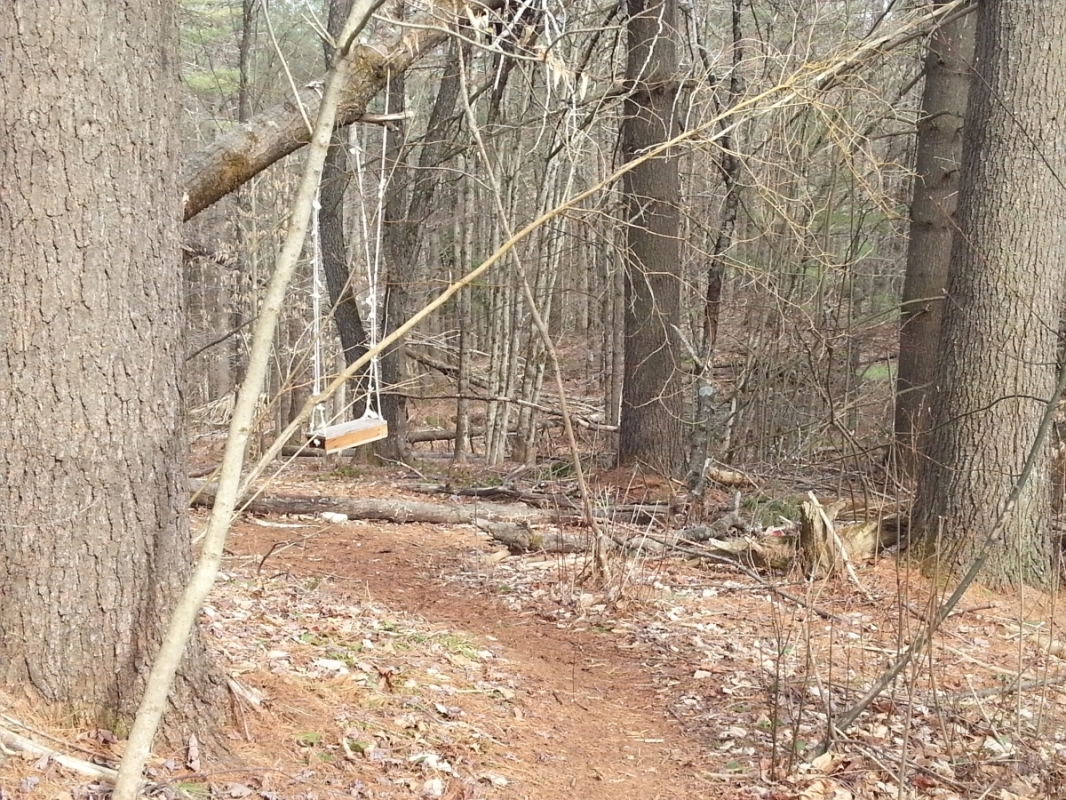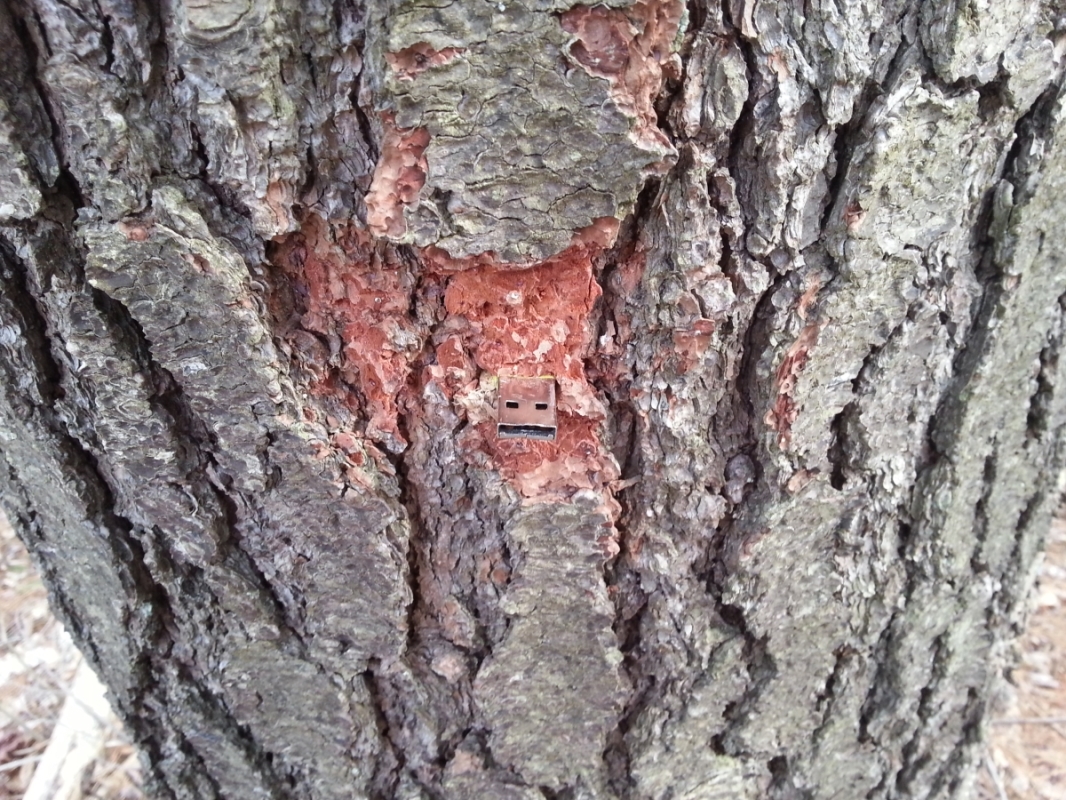In your typical Vermont forest near the hillside campus of Johnson State College stands an otherwise unremarkable tree except for one tiny peculiar attribute to it. Though this may sound like I’m going to jump into a lesson on Botany, this abnormality is man made, and very explainable. It’s incredibly easy to miss and is surely to raise questions if you find it. There is a USB drive lodged deep inside the tree, the distinguishable plug protruding out of the bark surface, allowing anyone to access it. But why?
This seemingly random and thoughtfully suspicious USB drive is actually part of a vast system of hidden flash drives that span the globe. Hidden in just about anyplace a creative mind can think of lodging such an item – brick walls, underneath bridges, trees like in Johnson and even in innocuous objects such as padlocks, this is part of a project and growing cyber society called Dead Drops, which is absolutely nothing like it’s ominous sounding name.
Created five years ago by Berlin-based media artist Aram Bartholl, Dead Drops is an anonymous file-sharing network via the use of USB drives that have been hidden around the world in public spaces. Anyone can find them and use them, downloading whatever files that have been left on the drive, or uploading files of your own to share.


If you’re so inclined, you can join this cool project yourself and install one into a wall or other spot in your own neighborhood. They’ve even included a useful how to video if you want to do so.
But with a project on this large of a scale, it also is bound to raise quite a lot of questions. How many of these hidden USB flash drives are out there? This project is five years old now, do they still work? Do people still actively contribute? Until very recently, this would have been a guessing game, but now, you can check out the Dead Drop Database, where you can find the Dead Drop closest to you, with updates from the most recent user telling you if the site is working, broken or gone.
Johnson seems to be the only one in Vermont, and according to my last check on the database, it still appears to be in working order! However, the location is a little vague, and may require some detective skills to find it’s exact whereabouts. But a USB drive successfully tucked away in a tree definitely helps to establish an aura of mystery that surrounds the project and it’s contributors, which is pretty alluring and may be worth the search. I’m actually pretty surprised that Burlington of all places doesn’t have one. Yet.
If you browse the map, the database lists another Dead Drop being located on Gore Road near Morse’s Line in Franklin County, but that seems to have been incorrectly geotagged. If you click on the icon, the real site is actually in Mont-Saint-Bruno, Quebec.
On Twitter? You can also follow the project on Aram’s Twitter account
Like seeing content like this? Your donations help to keep this blog going!


